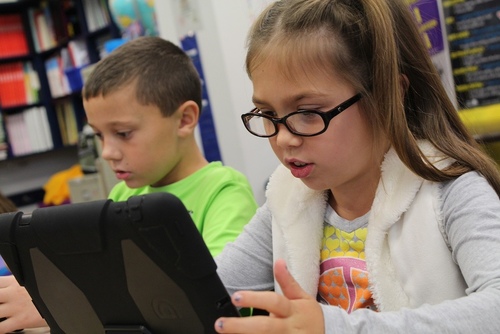Innovative technology, the capacity to collect, analyse, and apply data in real-time, is at the vanguard of this educational revolution. From interactive classrooms to personalised learning experiences, innovative technology is transforming how we gain information and skills.
The Many Ways Smart Tech Defines the Future of Learning
Technology has drastically changed how we live our lives and how we go about learning. Let us look into the ten ways smart tech is shaping the future of learning.
Personalise the Learning Experiences
One of the biggest pros of incorporating smart technology into education is the capacity to customise learning experiences to meet individual requirements. Traditional classrooms frequently need to accommodate pupils' different learning styles and paces.
With artificial intelligence (AI) and machine learning (ML), you can adjust and personalise information depending on a student's skills, limitations, and preferences. They are excellent utilities tailored for educational excellence.
Adaptive learning platforms employ algorithms to assess a student's performance and highlight areas that need reinforcement or further challenges. This guarantees that students receive personalised assistance and allows them to work at their speed, developing a deeper comprehension of the content. A more engaged and empowered learner actively participates in their educational path.
Work with Virtual and Augmented Reality
Innovative technology has changed how we see and interact with instructional material. Virtual and augmented reality (VR and AR) technologies remove traditional learning barriers by transporting students into immersive digital worlds. VR, for example, enables students to explore historical sites, inspect virtual animals, and even go inside the human body, providing previously unimaginable levels of immersive learning.
In contrast, augmented reality superimposes digital information over the natural world, enhancing the learning experience. Consider a biology lesson where students can see 3D holograms of cells floating above their textbooks or a geography class where historical maps come to life. These technologies make studying more enjoyable and assist students in understanding complex subjects through interactive and hands-on experiences.
AI-Powered Intelligent Tutoring Systems
With the new technology available to tutors, they may now use AI-powered intelligent tutoring solutions. These systems employ AI algorithms to give students tailored advice, real-time feedback, and assistance. Unlike traditional tutoring, which is limited by the availability of human teachers, AI-powered solutions are available 24/7, providing learners with continual aid.
These intelligent tutoring systems can adjust to each student's learning style, preferences, and progress. These styems will ensure a more personalised learning path. The AI tutor can tailor the programme if a learner requires further practice, clarification on a subject, or advanced challenges. This helps students overcome learning hurdles and instils confidence and independence in their academic path.
Gamification of Education
Gamification, or introducing game aspects into non-game circumstances, is another example of how innovative technology influences education. Gamification improves learning by including game features such as points, levels, and awards. Educational games and simulations are designed to entertain, educate, and reinforce academic concepts.
Innovative technology enables educators to create dynamic and flexible games catering to various skill levels and learning objectives. A math game, for example, might dynamically change the complexity of assignments based on a student's performance, ensuring a proper level of difficulty. Gamification enhances students' active participation in their education while encouraging teamwork, problem-solving, and critical thinking abilities.
Seek Out Collaborative Learning Platforms
Let’s face it: we live In the digital age, and cooperation is no longer restricted to the physical classroom. Smart technology has allowed collaborative learning systems to connect students and instructors across borders.
Cloud-based solutions enable students to collaborate on real-time projects, regardless of location. Video conferencing, discussion boards, and shared documents contribute to practical cooperation and idea exchange.
Collaborative platforms also allow instructors to establish virtual classrooms to connect with students synchronously and asynchronously. These platforms benefit students with flexible schedules or who prefer remote learning environments.
The capacity to communicate in a digital world prepares students for the collaborative character of the modern workplace, where distant communication and cooperation are becoming more common.
Data-Driven Decision-Making
Thanks to smart technology, you can use the existing data to guide and help you make more informed decisions. Learning analytics provide educators with insights into student performance, engagement levels, and areas for improvement.
By tracking and analysing this data, educators can identify patterns and trends, allowing them to make data-driven decisions. This can improve teaching methods and curriculum design.
For example, if analytics show that many students struggle with a certain concept, educators can change their approach or give more resources to solve it. On the other hand, if a specific teaching approach proves effective, it can be strengthened and expanded.
The capacity to use data in this way allows for ongoing development in educational processes, ensuring they stay relevant to students' growing needs.
Mobile Learning for All
Mobile learning has democratised access to education by enabling students to interact with educational content at any time and from any location.
Mobile devices have become effective learning tools, allowing students to access various instructional information. This primarily benefits students facing geographical, economic, or logistical barriers to traditional education.
Mobile learning tools and platforms are flexible and convenient, allowing students to study independently. Furthermore, these technologies usually provide offline access, allowing students to download information and continue their studies even when they do not have a reliable internet connection.
As a result, smart technology makes education more accessible and inclusive, reaching out to those who might otherwise be left behind.
Beef Up Cybersecurity in Education
As much as technology has made life easier for the everyday working folks, it has also made life easier for criminals to break in and gain access to sensitive information.
The problem with academic papers, academic data, online examinations, andclassrooms all getting digitalised, schools and colleges have become prime targets for cybercriminals. Protecting student data, preserving assessment integrity, and guaranteeing communication channel security are all critical components of adopting smart technology into education.
Educational institutions must invest in solid cybersecurity measures such as encryption, secure authentication systems, and frequent audits. Cybersecurity education must also provide instructors and students with the information to identify and manage possible threats. A safe technical infrastructure is critical for instilling trust in smart tech applications while protecting the confidentiality and privacy of vital educational data.
Challenges and Ethical Considerations
While smart technology has immense promise to change education, it is not without problems and ethical concerns. The employment of AI, for example, raises concerns about algorithmic bias and the ethical implications of allowing machines to judge students' academic trajectories. Privacy and security concerns need further investigation to prevent the abuse of students' sensitive information.
Furthermore, if access to smart technology is not inclusive, existing educational disparities may worsen. Students from economically disadvantaged homes will need equal access to gadgets or high-speed internet, expanding the digital gap. As educators and policymakers embrace smart technology, they must diligently address these obstacles to ensure that technology promotes, rather than impedes, educational fairness.
The Position of Teachers in the Smart Tech Era
As technology changes education, teachers' roles become increasingly more important. While smart technology may automate some aspects of education and deliver personalised learning experiences, the human touch is irreplaceable. Teachers are essential in mentoring children, developing critical thinking skills, and instilling social and emotional intelligence.
In the current technological advancement era, teachers must have an appetite to learn if they want to keep up with technological innovations. Being up to date with technological innovations allows teachers to incorporate this technology into their teaching techniques.
By implementing professional development programmes, educators will be able to use the technology more effectively in the classroom. Combining human experience and smart technology advancements will create a more dynamic and effective educational environment.
Conclusion
By correctly utilising the potential of smart technology, we can build an educational environment that prepares students for the challenges and possibilities this new era has in store for us.


































